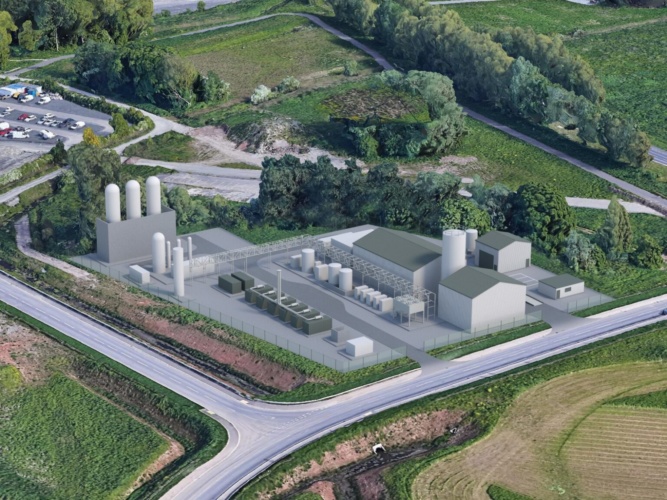
The facility is expected to be built at the Protos park, an industrial waste-to-energy eco-plant near Ellesmere Port in Cheshire that is being built by infrastructure development company Peel L&P Environmental
The ‘UK first’ facility, which gained planning consent from Cheshire West & Chester Council in March 2020, will use pioneering DMG (Distributed Modular Generation) technology developed by Powerhouse Energy Group (PHE) at Thornton Science Park, next door to Protos. The technology will be used to create hydrogen from waste plastic which could be used to fuel cars, buses and HGVs.
MORE FROM THE ENGINEER
COMMENT: Batteries and hydrogen should be seen as partners not rivals
Growing a green gas giant: Innovations in hydrogen production
DMG works by shredding plastic in small pieces before heating them within a so-called thermal conversion chamber.
After an initial phase in which the plastic melts and is vaporised into gases, further heating reforms the molecules into a synthetic gas, comprising a mixture of largely methane, hydrogen and a smaller volume of carbon monoxide.
The Thermal Conversion Chamber operates without oxygen, so there is no burning, however a non-combusting oxidising agent in the form of steam is added to control the process and the quality of the syngas.
Once through the Conversion Chamber the syngas is cleaned, leaving behind a few inert harmless residues, which are typically less than five per cent of the starting volume of waste plastics. According to Powerhouse Energy these residues can then be reused for other purposes or safely disposed of.
Completed during lockdown, the FEED study assessed all the design and engineering aspects of the proposed facility. It also evaluated the total project costs – estimated at £20m – which will facilitate Peel L&P Environmental finalising the project financing.
The facility will transform the way plastic is dealt with regionally, with the scheme also set to provide a blueprint for future projects to be rolled out nationally. Peel L&P Environmental will develop 11 facilities across the UK in the next few years and has the option of exclusive rights to the Powerhouse Energy technology in the UK leading to over 70 facilities in total.
Peel L&P claims that the approach could revolutionise the way that 4.9 million tonnes of plastic waste generated in the UK each year is handled.
Richard Barker, Director at Peel L&P Environmental said: “This FEED phase is an important step forward in delivering this innovative technology at Protos. Working with Powerhouse Energy we’re creating a blueprint for this UK first plastic-to-hydrogen facility, with plans to roll out over 70 more across the UK. With hydrogen increasingly being seen as an important part of our journey to net zero the time is now.”
Peel L&P is now engaging with supply chain partners to support the project with construction expected to start later this year. The company is also in the process of applying for an Environmental Permit for the facility.




Red Bull makes hydrogen fuel cell play with AVL
Surely EVs are the best solution for motor sports and for weight / performance dispense with the battery altogether by introducing paired conductors...